
México City from the air. (1206k)
The historic center of México City, also known as the Centro or Centro Histórico, is the central neighborhood in México City, México, focused on Zócalo or main plaza and extending in all directions for a number of blocks, with its farthest extent being west to the Alameda Central. The Zocalo is the largest plaza in Latin America. It can hold up to nearly 100,000 people.
This section of the capital lies in the municipal borough of Cuauhtémoc, has just over 9 km² (3.5 square miles) and occupies 668 blocks. It contains 9,000 buildings, 1,550 of which have been declared of historical importance. Most of these historic buildings were constructed between the 16th and 20th centuries. It is divided into two zones for preservation purposes. Zone A encompasses the pre-Hispanic city and its expansion from the Viceroy period until Independence. Zone B covers the areas all other constructions to the end of the 19th century that are considered indispensable to the preservation of the area's architectural and cultural heritage.
This is where the Spaniards began to build what is now modern México City in the 16th century on the ruins of the conquered Tenochtitlán, capital of the Aztec Empire. As the center of the ancient Aztec Empire and the seat of power for the Spanish kingdom of New Spain, the Centro Historico contains most of the city's historic sites from both eras as well as a large number of museums.
Pictures from Tenochtitlán, the Aztec capital, are on the Tenochtitlán page.
The Historic Centre of México City and Xochimilco is a UNESCO World Heritage Site.
All pictures are © Dr. Günther Eichhorn, unless otherwise noted.



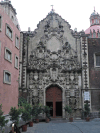








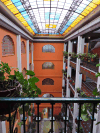



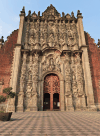
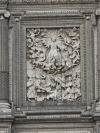




From the Basilica of Our Lady of Guadalupe entry in Wikipedia:
The Basilica of Our Lady of Guadalupe (Spanish: Basílica de Nuestra Señora de Guadalupe) is a Roman Catholic church, basilica, and National shrine of México in the north of México City which houses the cloak containing the image of Our Lady of Guadalupe. The 1709 shrine was built near the hill of Tepeyac, where the Virgin Mary is believed to have appeared to Saint Juan Diego Cuauhtlatoatzin. The basilica structure which now contains Diego's cloak was completed in 1974.
Officially known as the "Templo Expiatorio a Cristo Rey," the first structure of the old basilica was begun in 1695 and it was not finished until 1709. The major architect was Pedro de Arrieta. It is characterized by its doric interior and marble statues of Fray Juan de Zumárraga, archbishop at the time it was started, and Juan Diego, the peasant who saw the vision of the Virgin Mary. These are featured in the altarpiece that originally held the image of Our Lady of Guadalupe. (That altarpiece matches a similar one in the older chapel higher on the hill, which features the archangels Gabriel and Michael). The church was granted basilica status by Pope Pius X in 1904.
As much of México City is built upon the dried lake bed of Lake Texcoco, the land was unstable and the old basilica was sinking. A new, more spacious basilica was built. The old one was closed for many years and repairs have recently finished. It is open to the public and perpetual adoration is held there. It is a very important place for México City.




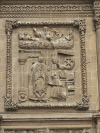

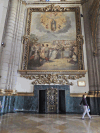
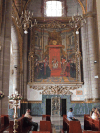
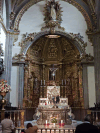




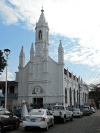






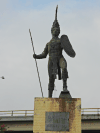


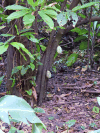

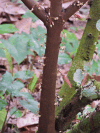

This page contains 49 pictures with 1 species
Page last updated on Thu Jun 10 13:55:09 2021 (Mountain Standard Time)
Page last updated on Thu Apr 25 01:46:25 2024 (Mountain Standard Time)
People in México on guenther-eichhorn.com